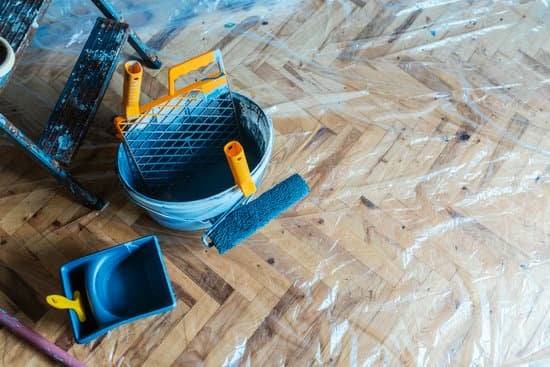Can you claim a home improvements on your taxes? Understanding tax deductions for home improvements is important for homeowners looking to save money on their taxes. From understanding the types of home improvements that qualify for deductions to knowing the necessary documentation needed, there are various factors to consider when claiming home improvement expenses on your taxes.
When it comes to taxes, many homeowners wonder if they can claim a tax deduction for home improvements. Homeowners may be eligible to claim certain types of home improvements as tax deductions, which can ultimately help reduce the amount of taxes owed to the government.
Before diving into the process of claiming home improvement expenses on your taxes, it’s important to understand what qualifies as a deductible home improvement and what criteria must be met in order to make a valid claim. Additionally, knowing how to calculate the tax deduction and being aware of common mistakes to avoid when claiming these deductions are essential for maximizing potential tax benefits.
Types of Home Improvements You Can Claim
When it comes to claiming home improvements on your taxes, it’s important to understand which types of expenses can be included in your tax deductions. Generally, the IRS allows you to claim certain home improvements that directly contribute to the value, energy efficiency, or accessibility of your property. For example, expenses related to installing a new roof, adding a wheelchair ramp, or upgrading your HVAC system can typically be claimed as tax deductions.
One of the key criteria for claiming home improvements on your taxes is that the expenses must be considered as capital improvements rather than general repairs and maintenance. Capital improvements are those that enhance the value of your property or extend its useful life, while regular repairs and maintenance are considered ongoing costs of owning a home. It’s important to carefully document all expenses related to home improvements so that you have adequate proof for your tax claim.
The documentation needed for claiming home improvements on your taxes typically includes receipts, invoices, and any permits or approvals obtained for the work. Additionally, it’s advisable to keep detailed records of any professional services hired for the home improvement project. By providing thorough documentation, you can substantiate your claim and reduce the risk of encountering issues with the IRS during an audit.
| Types of Home Improvements You Can Claim | Criteria Checklist |
|---|---|
| New roof installation | Capital improvement |
| HVAC system upgrade | Enhances property value |
| Wheelchair ramp installation | Increases accessibility |
Criteria for Claiming Home Improvements on Your Taxes
When it comes to claiming home improvements on your taxes, there are certain criteria that need to be met in order to qualify for a tax deduction. Here are some important factors to consider:
1. Eligible Improvements: Not all home improvements are eligible for tax deductions. The IRS has specific guidelines on what types of improvements can be claimed. Some common examples include adding energy-efficient features, installing a new roof, or making accessibility modifications for disabled individuals.
2. Principal Residence: In order to claim a tax deduction for home improvements, the property must be your principal residence. This means that vacation homes or rental properties may not qualify for this benefit.
3. Capital Improvement: The improvement made to the home must be considered a capital improvement, meaning that it adds value to the property or prolongs its useful life. Regular repairs and maintenance typically do not qualify for tax deductions.
Documentation Needed for Claiming Home Improvements:
Keep in mind that these criteria may vary depending on individual circumstances, so it’s always best to consult with a tax professional for personalized advice on claiming home improvements on your taxes.
Documentation Needed for Claiming Home Improvements
When claiming home improvements on your taxes, it is essential to have the necessary documentation to support your claim. The Internal Revenue Service (IRS) may require specific evidence to verify the expenses you are claiming, so it’s crucial to keep thorough records of all your home improvement expenditures.
Receipts and Invoices
One of the most critical pieces of documentation needed for claiming home improvements on your taxes is receipts and invoices related to the expenses. These documents should detail the cost of materials, labor, and any other associated expenses. Be sure to keep these receipts in a safe place, as they serve as tangible proof of your home improvement costs.
Contracts and Agreements
In addition to receipts and invoices, contracts and agreements with contractors or service providers are essential for substantiating your home improvement claims. These documents should outline the scope of work, costs, payment schedules, and any warranties or guarantees that were provided for the services rendered.
Before-and-After Photos
While not always required, before-and-after photos can be useful supplementary documentation for claiming home improvements on your taxes. These visual records can help support the need for the improvements made and demonstrate the extent of the work performed. Additionally, they can provide additional credibility to your claim in case of an audit by the IRS.
By keeping these key documents in order and readily available, you can substantiate your home improvement claims when filing your taxes. Remember that proper documentation is essential for claiming these deductions successfully.
How to Calculate the Tax Deduction for Home Improvements
When it comes to calculating the tax deduction for home improvements, there are a few key factors to keep in mind. First and foremost, it’s important to understand that not all home improvements are eligible for tax deductions. The IRS specifies that only certain types of home improvements can be claimed, so it’s crucial to familiarize yourself with the guidelines before proceeding.
One type of home improvement that you can claim on your taxes is energy-efficient upgrades. This can include things like installing solar panels, energy-efficient windows, or a more efficient HVAC system. These types of improvements are not only great for reducing your utility bills, but they also come with the added benefit of potential tax savings.
Another important factor to consider when calculating the tax deduction for home improvements is the amount of money you’ve spent on the project. In general, the cost of the improvement itself will not be entirely deductible in one year. Instead, it will need to be depreciated over time.
However, there are some tax credits available for specific energy-efficient improvements that can you claim a home improvements on your taxes It’s always best to consult with a tax professional or use tax preparation software to ensure that you are maximizing your deductions within the legal limits.
In addition to energy-efficient upgrades, certain medical and accessibility-related home improvements may also be eligible for tax deductions. For example, if you’ve made modifications to your home to accommodate a medical condition such as adding ramps or widening doorways for wheelchair accessibility, these expenses may qualify for a tax deduction. As always though, it’s crucial to keep detailed records and documentation of all expenses related to these improvements in case of an audit by the IRS.
| Type of Home Improvement | Tax Deduction Eligibility |
|---|---|
| Energy-Efficient Upgrades | Potential tax savings and credits available |
| Medical and Accessibility-Related Improvements | May qualify for a tax deduction with proper documentation |
Common Mistakes to Avoid When Claiming Home Improvements
When claiming home improvements on your taxes, it’s important to avoid common mistakes that could lead to issues with the IRS or missed opportunities for deductions. Understanding the potential pitfalls can help you navigate the process more effectively and maximize your tax benefits.
Incorrectly Categorizing Repairs vs. Improvements
One of the most common mistakes when claiming home improvements on your taxes is incorrectly categorizing repairs as improvements. While improvements such as adding a new bathroom or renovating a kitchen typically qualify for tax deductions, simple repairs like fixing a leaky faucet or replacing a broken window do not. It’s important to differentiate between these two categories to ensure that you are accurately claiming eligible expenses.
Overstating the Value of Home Improvements
Another mistake to avoid is overstating the value of home improvements when claiming them on your taxes. While you may have spent a significant amount on a renovation project, not all expenses may be eligible for tax deductions. It’s essential to carefully review the IRS guidelines and consult with a tax professional to accurately determine the deductible amount for each improvement.
Not Keeping Proper Documentation
Failing to keep proper documentation is another common mistake that can hinder your ability to claim home improvements on your taxes. When filing for tax deductions, it’s crucial to maintain detailed records of all expenses related to the home improvements, including receipts, contracts, invoices, and permits.
Without proper documentation, you may encounter difficulties in substantiating your claims in case of an audit by the IRS. Therefore, maintaining thorough and organized records is essential for successfully claiming home improvement tax deductions.
Avoiding these common mistakes can help ensure that you are maximizing your tax benefits while also complying with IRS regulations when claiming home improvements on your taxes. Consulting with a qualified tax professional can provide further guidance and assistance in navigating this process effectively.
Other Tax Benefits for Home Improvements
When it comes to home improvements, there are other tax benefits that homeowners can take advantage of in addition to potential deductions. Here are some of the other tax benefits that you may be eligible for:
1. Energy Efficiency Credits: Making energy-efficient upgrades to your home can qualify you for tax credits. This includes installing solar panels, energy-efficient windows, doors, and roofs, insulation, and more. These credits can help offset the cost of these improvements and reduce your tax bill.
2. Medical Related Home Improvements: If you make home improvements for medical reasons, such as adding wheelchair ramps or modifying your bathroom for medical necessity, you may be able to claim these expenses as a medical deduction on your taxes.
3. State and Local Tax Incentives: Some states and local governments offer their own tax incentives for certain home improvements. These incentives can include property tax exemptions or credits for specific types of improvements, such as historic preservation.
It’s important to research and understand all potential tax benefits related to your home improvements before filing your taxes. Consulting with a tax professional can also help ensure that you are maximizing all available tax benefits related to your home improvement projects. By taking advantage of these additional tax benefits, homeowners can further offset the costs of making necessary improvements to their homes while also enjoying potential long-term savings on energy costs and overall property value.
Important Reminders When Filing for Home Improvement Tax Deductions
When it comes to home improvements, understanding the tax implications is crucial. Claiming home improvements on your taxes can potentially save you money and reduce your tax liability. However, it is important to follow strict guidelines and provide accurate documentation to ensure that you are eligible for these deductions.
One important reminder when filing for home improvement tax deductions is to ensure that the improvements made actually qualify for a deduction. The IRS has specific criteria for what qualifies as a deductible home improvement, so it is essential to familiarize yourself with these guidelines before claiming any expenses.
Additionally, keeping thorough documentation of all your home improvement expenses is critical when filing for tax deductions. This includes receipts, invoices, contracts, and any other relevant paperwork that can support your claim. Without proper documentation, you may not be able to substantiate your deductions in case of an audit.
Finally, seeking professional advice from a tax expert or accountant can provide you with valuable guidance when navigating the complexities of claiming home improvements on your taxes. They can help you maximize your deductions while ensuring compliance with IRS regulations and avoiding common mistakes that could jeopardize your claim. By following these important reminders, you can confidently file for home improvement tax deductions and potentially benefit from valuable savings on your taxes.
Frequently Asked Questions
Can I Deduct Home Improvements on My Tax Return?
Generally, you cannot deduct home improvements on your tax return. However, these expenses may increase the cost basis of your home, which can be beneficial when calculating capital gains taxes upon selling.
What Is Tax Deductible for Homeowners?
Tax-deductible expenses for homeowners often include mortgage interest, property taxes, and certain home office expenses. Energy-efficient home improvements and medical adaptations may also qualify for deductions.
What Qualifies as Capital Improvements?
Capital improvements are those that add value to your home, prolong its life, or adapt it to new uses. Examples include adding a swimming pool, renovating a kitchen or bathroom, or installing a new heating system. These expenses are not deductible but may benefit you when selling the property.

I’m thrilled to have you here as a part of the Remodeling Top community. This is where my journey as an architect and remodeling enthusiast intersects with your passion for transforming houses into dream homes.





